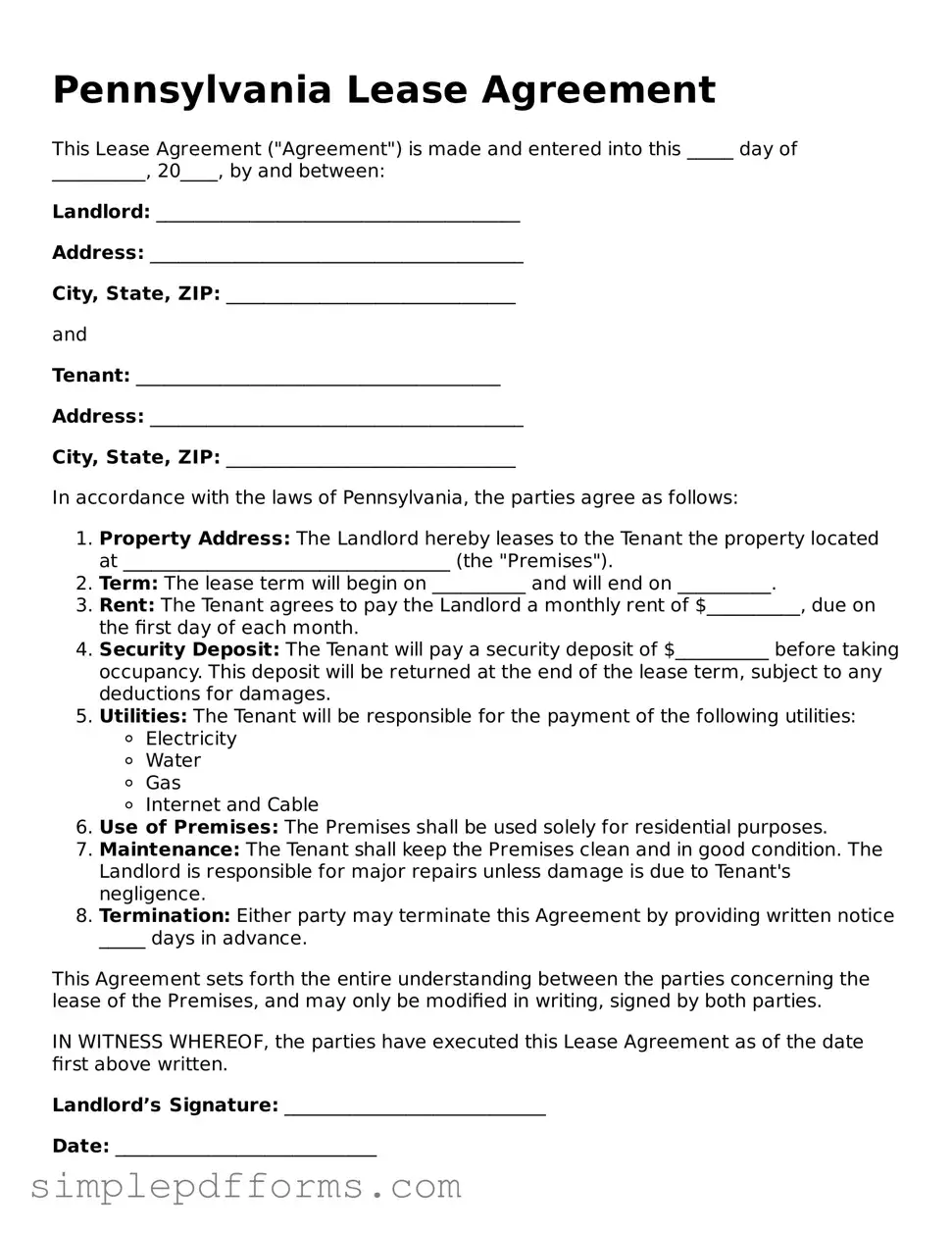Pennsylvania Lease Agreement
This Lease Agreement ("Agreement") is made and entered into this _____ day of __________, 20____, by and between:
Landlord: _______________________________________
Address: ________________________________________
City, State, ZIP: _______________________________
and
Tenant: _______________________________________
Address: ________________________________________
City, State, ZIP: _______________________________
In accordance with the laws of Pennsylvania, the parties agree as follows:
- Property Address: The Landlord hereby leases to the Tenant the property located at ___________________________________ (the "Premises").
- Term: The lease term will begin on __________ and will end on __________.
- Rent: The Tenant agrees to pay the Landlord a monthly rent of $__________, due on the first day of each month.
- Security Deposit: The Tenant will pay a security deposit of $__________ before taking occupancy. This deposit will be returned at the end of the lease term, subject to any deductions for damages.
- Utilities: The Tenant will be responsible for the payment of the following utilities:
- Electricity
- Water
- Gas
- Internet and Cable
- Use of Premises: The Premises shall be used solely for residential purposes.
- Maintenance: The Tenant shall keep the Premises clean and in good condition. The Landlord is responsible for major repairs unless damage is due to Tenant's negligence.
- Termination: Either party may terminate this Agreement by providing written notice _____ days in advance.
This Agreement sets forth the entire understanding between the parties concerning the lease of the Premises, and may only be modified in writing, signed by both parties.
IN WITNESS WHEREOF, the parties have executed this Lease Agreement as of the date first above written.
Landlord’s Signature: ____________________________
Date: ____________________________
Tenant’s Signature: ____________________________
Date: ____________________________
